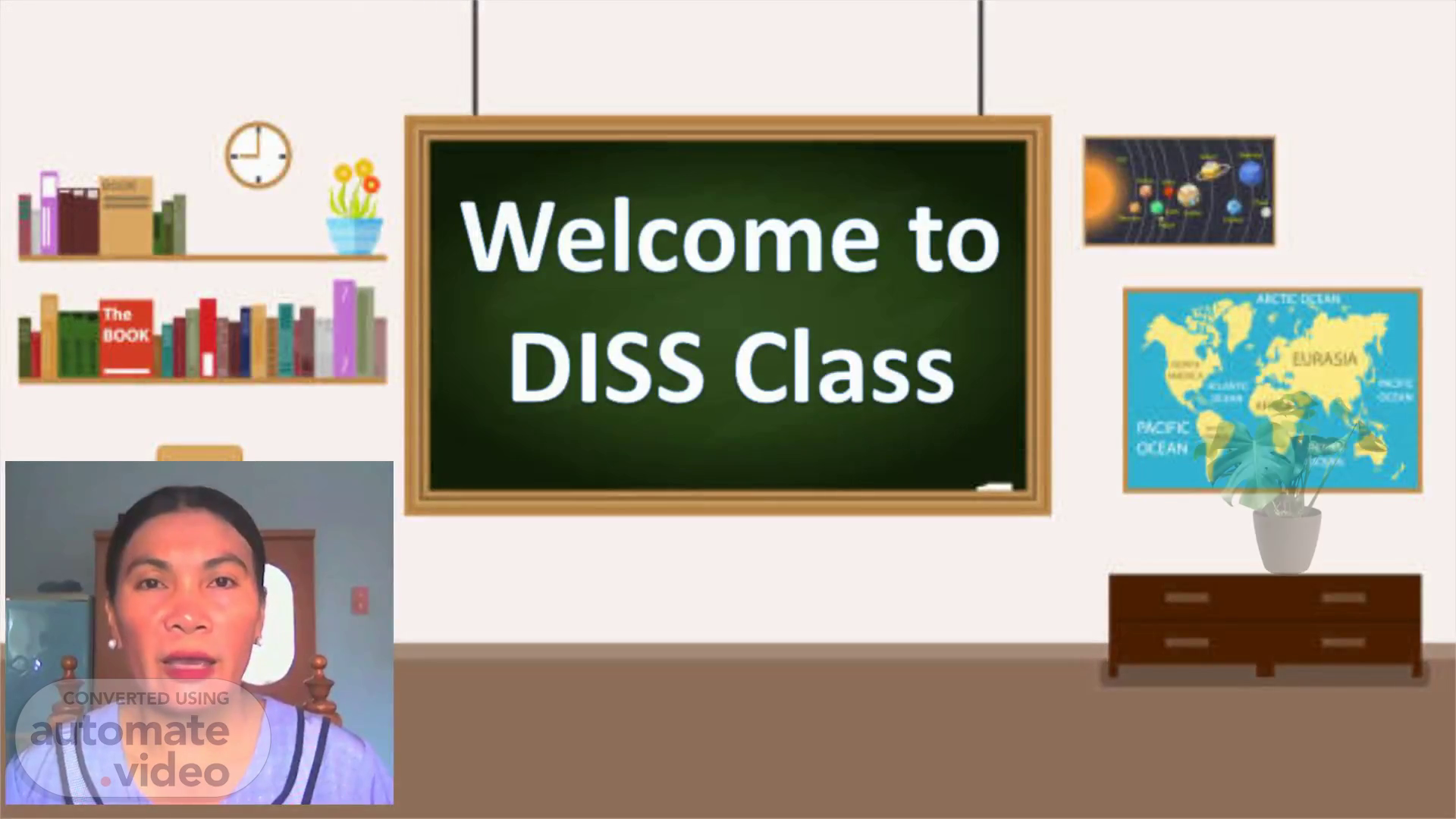
Page 1 (0s)
Welcome to DISS Class. monstera-removebg-preview.
Page 2 (5s)
Dominant Approaches and Ideas in Social Sciences (Psychoanalysis).
Page 3 (22s)
Online Classroom Rules. Be On Time For Class. One of the most important online classroom rules is to be on time for class. Dress Appropriately. Choose Your Safe Study Space. No Eating Or Drinking. One at a time. Be prepared,.
Page 4 (59s)
ACTIVITY TIME. Jumble-Rumble.
Page 5 (1m 21s)
RCTIVITY TIME. Jumble-Rumble. Directions: The following are jumbled words about the previous lesson. Find out what the word is and write it on a metacard ..
Page 6 (2m 3s)
SUPERSTRUCTURE. 1. PUCTREUSRUSTES.
Page 7 (2m 20s)
SYMBOLIC INTERACTIONISM. 2.IYBOMCLS MIRASONITCEITN.
Page 8 (2m 34s)
MARXISM. 3. SMAMIXR.
Page 9 (2m 49s)
STRUCTURAL FUNCTIONALISM. 4.LRRUTCSUAT FNSILOMATCIU.
Page 10 (3m 4s)
BOURGEOISIE. 5.GOSIIBOERUE.
Page 11 (3m 26s)
Learning Competency : Analyze the basic concept and principles of the major social sciences theories. (Psychoanalysis).
Page 12 (3m 32s)
Learning Objectives:. 1. Explain the key concept of psychoanalysis. 2. Present the interpretation on personal and social experiences using the psychoanalysis. 3. Give importance to the relevant approaches of Social science..
Page 13 (4m 0s)
Activity: PICTURE ANALYSIS. Direction: Look at the picture and describe what you see on it by determining the significant ideas that it conveys..
Page 14 (4m 17s)
Processing Question: 1.What do you know about the picture?.
Page 15 (4m 54s)
Processing Question: 2. How does the picture relate to the topic?.
Page 16 (5m 10s)
What is Psychoanalysis?.
Page 17 (5m 17s)
Psychoanalysis is defined as a set of psychological theories and therapeutic techniques that have their origin in the work and theories of Sigmund Freud..
Page 18 (5m 30s)
The core idea at the center of psychoanalysis is the belief that all people possess unconscious thoughts, feelings, desires and memories..
Page 19 (5m 42s)
Psychoanalysis.
Page 20 (6m 0s)
Sigmund Freud (Source: (WGBH 1998) Father of Psychoanalysis He had a medical background wanted to do “neurophysiologic research”..
Page 21 (6m 26s)
Levels of Mental Life. Freud's Model Of Personality Structure Conscious: Contact with the outside world Preconscious: Material just Ego beneath the surface Of awareness Unconscious: Difficult to retrieve material; well below the surface of awareness Reality principle Secondary process thinking ld Pleasure principle Primary process S uperego Moral imperatives.
Page 22 (7m 5s)
Levels of Mental Life. Unconscious The material that we have no immediate access to, and we cannot bring into consciousness. It includes repressed feelings, hidden memories, habits, thoughts, desires, and reactions..
Page 23 (7m 29s)
Levels of Mental Life. 2.Preconscious It stores all the thoughts of which you could bring into consciousness fairly easily if you wanted to; thoughts that can be easily recalled without special techniques..
Page 24 (7m 49s)
Levels of Mental Life. 3.Conscious It contains those thoughts of which you are currently aware (e.g. logic and reasoning)..
Page 25 (8m 3s)
Provinces of the Mind. 1.Id Is concerned only with satisfying personal desires; and The actions taken by the id are based on the Pleasure Principle (motivate the organism to seek pleasure)..
Page 26 (8m 31s)
Provinces of the Mind. 2. Ego The primary job of the ego is to mediate/ balance the demands of the Id and the outer forces of reality; The center of reason, reality-testing, and common sense; and Governed by the Reality Principle.
Page 27 (8m 56s)
Provinces of the Mind. 3. Superego The moral arm of the personality, it corresponds to one’s conscience; Bids the psychic apparatus to pursue idealistic goals and perfection; and The “ideal” self..
Page 29 (9m 51s)
PSYCHOANALYSIS. What did you Learn?. ____________ is defined as a set of psychological theories and therapeutic techniques that have their origin in the work and theories of Sigmund Freud..
Page 30 (10m 14s)
ID. What did you Learn?. The primary job of the ego is to mediate/ balance the demands of the __________ and the outer forces of reality..
Page 31 (10m 29s)
CONSCIOUSNESS. What did you Learn?. The material that we have no immediate access to, and we cannot bring into ______________.
Page 32 (10m 51s)
SUPEREGO. What did you Learn?. The ___________ is the moral arm of the personality and it corresponds to one’s conscience..
Page 34 (12m 10s)
Directions: Identify the following statements. Write your answer on a 1/4 sheet of paper..
Page 35 (12m 21s)
1. It is believe that all people possess unconscious thoughts,feelings,desires and memories..
Page 36 (12m 59s)
3.It contains those thoughts of which you are currently aware..
Page 37 (13m 18s)
5.Bids the psychic apparatus to pursue idealistic goals and perfection..
Page 38 (14m 1s)
7. Who is the f ather of Psychoanalysis ?. 8.The logic and reason belong to _____________ level of mental life..
Page 39 (14m 23s)
9. What is the “ideal” self ?. 10.It is governed by reality principle..
Page 40 (14m 47s)
Thank You GIFs | Tenor.